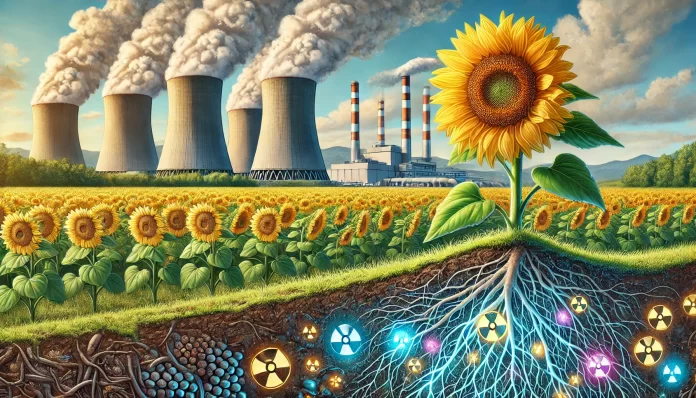When you think of sunflowers, you probably picture golden fields, cheerful blooms, and seeds for snacking. But these sunny plants are more than just pretty faces—they have a hidden superpower. Sunflowers (Helianthus annuus) can clean up contaminated soil, including areas affected by heavy metals, industrial waste, and even nuclear radiation.
The Science Behind the Cleanup
The process that makes sunflowers soil superheroes is called phytoremediation. It’s a natural method of using plants to absorb, store, and sometimes neutralize harmful substances in the environment. Sunflowers are particularly good at drawing up toxic materials through their roots, which are then stored in the plants’ stems, leaves, or seeds.
These hardy plants are especially effective at extracting:
- Heavy metals like lead, arsenic, and cadmium.
- Radioactive isotopes such as cesium-137 and strontium-90, found in contaminated soil after nuclear disasters.
The sunflower’s fast growth and deep root systems make it ideal for remediation, as it can quickly take up toxins and thrive in difficult conditions.
Cleaning Up Nuclear Disasters
One of the most famous examples of sunflower phytoremediation was after the 1986 Chernobyl nuclear disaster in Ukraine. Scientists planted sunflowers near contaminated water sources to reduce the levels of radioactive isotopes. A similar strategy was used in Japan after the Fukushima nuclear meltdown in 2011.
In both cases, sunflowers helped to stabilize the environment, although the process is not a complete solution. While they don’t “destroy” the toxins, they concentrate them in the plant tissues, making cleanup more manageable. Once the plants are harvested, they must be safely disposed of to prevent further contamination.
Everyday Applications
Phytoremediation with sunflowers isn’t limited to nuclear sites. It can also be used in:
- Industrial spill zones, where soil is contaminated by heavy metals.
- Urban gardens, to rehabilitate polluted lots into safe, arable land.
- Wetlands, to filter toxins out of water.
While this process is not as fast or powerful as chemical treatments, it is an environmentally friendly and cost-effective alternative.
A Symbol of Hope
Beyond their environmental benefits, sunflowers are symbolic of resilience and renewal. Their ability to thrive in harsh conditions and help heal the Earth inspires hope for recovery and growth in even the most damaged ecosystems.
The next time you see a sunflower swaying in the breeze, remember: it’s not just a beautiful plant—it’s a natural detox machine, quietly working to make the world a cleaner and safer place.
For gardeners interested in testing sunflower phytoremediation, remember that any harvested plants from contaminated areas must be handled carefully. While sunflowers can make soil safer, their true power lies in how they bring nature and science together to repair the planet.




